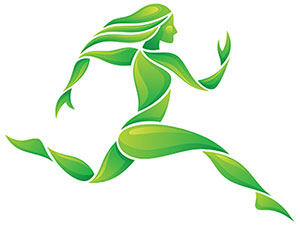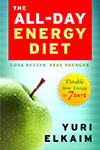|
|
|
The Bone-Chilling Truth about Dairy
by Yuri Elkaim

A little bit of information that you probably won’t be so happy to hear.
Dairy (specifically, cheese) is the most acid forming of all foods. This is due to the large amount of protein and phosphorus it contains. Even though it also contains a substantial amount of calcium, its calcium benefits are few and far between, because the phosphorus and acidic nature of dairy impairs calcium absorption and utilization in the body.
Comparing cow’s milk to human breast milk, we see that dairy has four times more protein and about 1,018 mg of calcium per 100 g, while human breast milk only has 33 mg of calcium per 100 grams. Seeing that, we’d automatically believe that milk is great for your bones, right? Isn’t that what we’ve always been told? Hold on a second . . .
In the body, the relationships between minerals are more important than the quantity of any single one. For instance, the ideal calcium-to-phosphorus ratio is 2.5 to 1. However, cow’s milk has a calcium-to-phosphorus ratio of 1.27 to 1. Human breast milk is much better—2.35 to 1, so it has more calcium in relation to phosphorus. Human breast milk is the ideal for humans. Cow’s milk has a lot more protein and a lot more calcium because it’s needed to feed baby cows, not baby humans or adult humans. Cows grow to about one ton in one year. Therefore, they need far more protein and way more calcium than we do. Humans take forever to reach 100 pounds. We don’t need anywhere near that amount of protein or calcium. Furthermore, since phosphorus directly inhibits calcium absorption in the digestive tract, getting too much from food (think dairy, meat, and fizzy drinks) is not helpful for good bone health.
That’s right—dairy can actually be bad for your bone health. Today, the average person consumes about 740 mg of calcium per day. Ironically, the calcium intake of our Paleolithic ancestors has been theorized to be between 1,500 and 2,000 mg per day. Remember, they never drank milk; it wasn’t even available at that point in time. These were hunters and gatherers—not farmers—who ate large of amounts of vegetables, tubers, berries, and wild game. They were active and exposed to natural sunlight daily. Not surprisingly, it’s these foods—not milk—that are the ingredients for strong and healthy bones.
Are you scratching your head yet? If this doesn’t sound right to you, here are few more insights that should make you second-guess whether you really need to be relying on dairy for strong bones:
- In Greece the average milk consumption doubled from 1961 to 1977, and shot up even higher by 1985. During the period between 1977 and 1992, age-adjusted rate of hip fractures (an indication of osteoporosis) almost doubled, too.
- In Hong Kong in 1989, twice as many dairy products were consumed as in 1966, and osteoporosis incidence tripled in the same period. Now, Hong Kong’s milk consumption level is almost equal to that of Europe. The same goes for its incidence of osteoporosis.
- Americans, like Australians and New Zealanders, consume three times more milk than the Japanese, and hip-fracture incidence in Americans is two-and-a-half-fold higher. Interestingly, among the segments of the population in America that consume less milk, such as Mexican-Americans and black Americans, osteoporosis incidence is twofold lower than in white Americans. It has been established that this is not due to genetic differences.
On top of all of these overwhelming “coincidences,” I haven’t even mentioned the potential negatives associated with the casein and lactose in milk or the hormones and antibiotics that may also be present. If you want an alternative to cow’s milk, then consider almond or hemp milk. These are super-easy to make and are loaded with terrific nutrients like vitamin E and well-balanced essential fatty acids.
If you’re wondering where you’re supposed to get your calcium without dairy, then here are your best food sources:
Food |
Calcium (mg) |
Sesame Seeds (1 cup) |
1,404 |
Collard Greens (1 cup cooked) |
357 |
|
|
Spinach (1 cup cooked) |
291 |
Turnip Greens (1 cup cooked) |
249 |
Kale (1 cup cooked) |
179 |
This information comes from the USDA: http://ndb.nal.usda.gov.
Notice a similar trend again—green veggies are your friend! Not only do they alkalize your blood, but they also provide adequate levels of calcium, which can realistically be attained in a day of healthy eating.
Still not convinced? Think about this: What do cows eat? Ideally, they graze on grass all day long. If they’re eating grass and manufacturing their calcium from that, doesn’t that tell you something?
 
Yuri Elkaim is a registered holistic nutritionist. He is a former professional soccer player and was the head strength and conditioning and nutrition coach for the men's soccer program at the University of Toronto. Yuri is the professor of Super Nutrition Academy; the author of The All Day Energy Diet; and the creator of more that 130 workout programs, alldayenergydiet.com.
|

